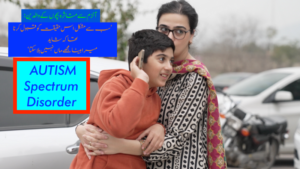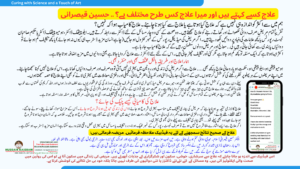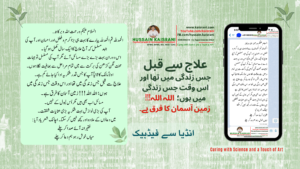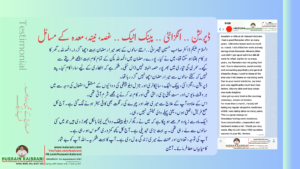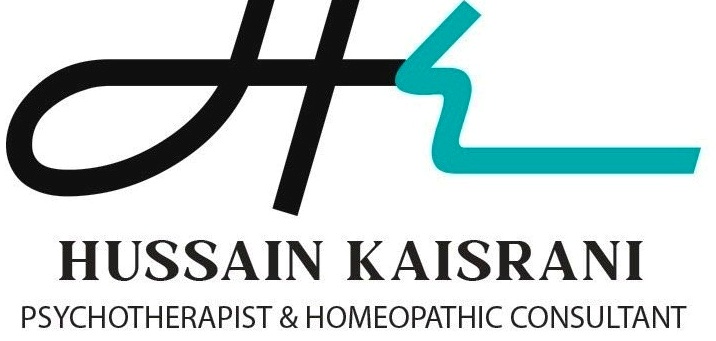The word holistic has been recently used to mean a number of different things including using a combination of different therapies. In homeopathy the quintessence of what holistic means is treating the individual as a whole and not just the different parts. Homeopathy looks at the root of the problem. If there is a behavioural issue the homeopath will first look at the circumstances that led to the behaviour. For example if the child has temper tantrums it may be due to a hypersensitivity to the environment or some internal discomfort. Addressing this with homeopathic treatment may help reduce the behaviour and also help the child respond better to behaviour therapy.
Of course the homeopath will not just take a single symptom to treat to the exclusion of the other issues but will take a complete history and prescribe a constitutional remedy that will cover the entire symptom picture of the child. Homeopathy believes in individualization. This means that if there are two children with the same disorder they will receive entirely different remedies based on the symptom picture they present in addition to the common symptoms of the disorder. It is like finding the unique blueprint of each individual and prescribing based on this.
The history taking is also a very important aspect of the homeopathic consultation. Here the entire history including the state of the mother during pregnancy is taken. Homeopathy also helps with emotional healing. In this article I hope to give a brief idea about the homeopathic approach and also the concepts of holistic well-being from the homeopathic perspective. This will also include discussion on the beneficial effects of homeopathic treatment for autism with case studies.
Homeopathy believes in restoring homeostasis or external and internal equilibrium and harmony. It is important to understand how the homeopathic model is different. Homeopathic remedies act in a dynamic way by stimulating the natural defense mechanisms of the body. In homeopathic treatment the medicine just acts as a stimulus and the system heals itself by throwing out the disease force or in other words it provides the impetus needed for the system to recover. Symptom matching is done with a view to find a remedy that exactly is able to reproduce the child’s symptoms and when introduced to the system it repels or neutralizes the actual symptoms. Since homeopathy acts at a nano level, the effects of the remedially induced symptoms just pass away leaving the system disease free and healthy.
Recent researches by scientists from different fields like engineering and materials sciences such as the late Rustum Roy from the Material Science Depatment of the University of Pennsylavania, The nobel prize winning virologist Luc Montagier , Professor Anisur Khuda Baksh from the Dept of Zoology University of Kalyani Kolkata and Professor Chikramane PS et al from the Department of Chemical Engineering, IIT Bombay have helped improve know ledge about the homeopathic remedies and the way they act. This also helps dispel the notion that homeopathy works because of the placebo effect
Changes in Gene Expression
There are a number of research studies that have documented changes in gene expression with the usage of homeopathic remedies These include both in vitro and in vivo studies.
As far back as 1925 G. Stearns & M. Stark reported the action of microdilutes on fruit fly tumors. In this study it was seen that microdilutes helped alter the genetic tendency to tumor formation in fruit flies after the administration of a microdilution of the tumor itself (isopathy).
A recent research study by Marzatto et al (2013) to study the sensitivity of gene expression in human neurocytes to ultra low dilution of Gelsemium found that Gelsemium used as an herbal extract and in homeopathic form exercises its effects on a particular series of genes involved in neuronal function.
Another study by Khuda Baksha AR, Santu Kumar Saha et al (2013) found that homeopathic potenized remedies act primarily through modulation of gene expression and has more than just a placebo effect.
The above mentioned studies help to prove that homeopathic remedies act not just because of the placebo effect but can also help in changing gene expression and reduce genetic transmission of diseases and disorders
Emotional States and Its Effects
In India it has been the practice since ancient times for pregnant women to be sent to their maternal homes till the baby was born. This was done because it was felt that the mother should be in a state of complete rest and relaxation both physically and mentally. Recent research has shown that the state of the mother during pregnancy has a significant role to play in the way the child develops in the womb.
According to a study by Dennis K. Kinney et al (2008) stress during pregnancy or exposure to stressful life events prenatally was associated with an increased risk for autism as well as other developmental and psychological disorders. This study found that stress during pregnancy may also hinder fetal brain development.
A review study by Van Der Bergh et al (2005) found 14 independent prospective studies that demonstrated a link between antenatal maternal anxiety and stress and emotional, behavioural and cognitive problems in the child.
Homeopathic treatment during pregnancy can help in emotional healing and also in preventing intra uterine growth retardation. It can also help as a protective measure to prevent the bad effects of stress.
One very interesting research study by Prakash DJ et al (2010) studied the protective role of Hypericum Perfolatium in stress induced behavioural and biochemical alterations in albino mice. The pure extract of Hypericum and nanoparticles of Hypericum were used. It was found that both the extract and the nanoparticles significantly reduced stress induced behavioural and oxidative damage. The effect of hypericum nanoparticles was more than that seen with the extract. The study showed significant improvement in memory and recall that was stress induced after administration of Hypericum and demonstrated the neuroprotective effect against stressful conditions.
One case that I saw was of a lady with gestational diabetes. She came to see me in the third month of her pregnancy. She had a past history of miscarriage and her gynecologist had advised termination of the pregnancy due to the possibility of congenital anomalies. She was also in a highly stressed state due to the above mentioned factors. I started her on Acid Phos initially to control the sugar levels and then followed it up with Natrum Mur. She was on homeopathic treatment throughout the pregnancy. She had a full term normal delivery. After a few months she came to the clinic to introduce me to her 3 month old girl child.
Another case was of a lady who had difficulty conceiving after a miscarriage that was due to a chronic illness. She was highly stressed due to the past experience. I started her on Natrum Muriaticum. She conceived but was apprehensive and highly stressed about losing the baby and also about the possibility of congenital anomalies due to her health. She was on different homeopathic remedies throughout the pregnancy. She had a full term normal delivery and gave birth to a healthy baby.
Chronicles of Children
The following are chronicles of four children with autism. I have selected the key points for each child to provide a brief overview of the symptom picture. I have divided the symptom picture into two types. The first are the common symptoms or diagnostic symptoms and the second are the peculiar, queer, strange and rare symptoms, (the pqrs) symptoms as they are known that helped in selecting the appropriate remedy.
- Master Ab – 3yrs 9mths – Diagnosis: PDD
Major Parental Concerns & Presenting Complaints
Common Symptoms:
Stranger Anxiety
Impatient & Obstinate
Poor Eye Contact
Problems with Social Interaction and Group Activity
Poor Attention Span
Peculiar Queer Strange & Rare Symptoms
Fears insects especially bees and flies
Timid & Shy
Lack of self confidence
Sensitive-Gets distressed if others talk about him
Cries easily
Sensitive to changes of tone & specific sounds
Lack of thirst for plain water but drinks fruit Juices
Obsession with switches
Master Ab- Sample of Remedies Used with Keynotes
Pulsatilla 200: The Wind Flower
The weather-cock among remedies. Mild, gentle, yielding disposition. Sad, crying readily.Weeps when talking. Changeable, contradictory. Symptoms ever changing. Thirstless, peevish and chilly. Great sensitiveness. Timid, irresolute, fearful.
Lycopodium 200: Club Moss
Melancholy, afraid to be alone. Little things annoy. Extremely sensitive. Averse to undertaking new things. Loss of self-confidence. Apprehensive. Weak memory, confused thoughts. Cannot bear to see anything new. Cannot read what he writes.
Stramonium200: Datura
Adapted to: ailments of young plethoric persons especially children. Desires light and company. Cannot bear to be alone. Worse in the dark and solitude. Cannot walk in a dark room. Obsession with switching lights on and off.
Master Ab – Changes Seen -As Reported by Parents
His confidence has improved. Now when visitors or strangers approach him, he shakes hands with them and waves bye sometimes as well. Response to Commands: Getting better in following instructions. He is now more cheerful and seems to love going to school and playing alongside other children, improved self confidence. His teachers say he has started participating in group activities with little language if encouraged. Speech: Receptive and Expressive Language Ability – Language is better than before and is able to express most of the times by using relevant language most of the times. Also has started using long sentences with 5-6 words.
- Master Sk- 4.5years – Diagnosis: ASD
Major Parental Concerns & Presenting Complaints
Common Symptoms:
Poor eye contact
Poor attention span
Temper tantrums
Self injurious behaviour
Poor response to commands & name
Poor expressive language
Obstinate
Peculiar Queer Strange & Rare Symptoms
Always needs somebody to be with him
Mother has to be next to him but does not interact
Will keep checking to see if parents are there
Shyness with strangers
Fears: Firework sounds, fire and balloons
Prefers playing with adults.
Master Sk – Sample of Remedies Used with Keynotes
Calcarea Carbonica: Calcium Carbonate
Adapted to children with blond hair, light complexion, blue eyes, fair skin, tendency to obesity in youth. Pale, weak timid, easily tired when walking. Children with red face, flabby muscles who sweat easily due to which they take cold readily. Delayed development. Head sweats profusely while sleeping. Difficult and delayed dentition with characteristic head sweats, and open fontanelles. Great longing for eggs; craves indigestible things
Silicea 200:Pure Flint or Quartz
Adapted to the nervous, irritable, sanguine temperament. Constitutions which suffer from deficient nutrition, not because food is lacking in quality or in quantity, but from imperfect assimilation. Oversensitive, physically and mentally. Restless, fidgety, starts at least noise. Anxious, yielding, fainthearted. Mental labor very difficult; reading and writing fatigue, cannot bear to think.
Pulsatilla200:Wind Flower
Master Sk – Changes Seen – As Reported by Parents
Doing much better now, talkative, sensible, humor, very playful, good observer and doing notorious things sometimes at home. He never gets angry now a days nor adamant. We receive positive comments in school he is good at academics, listening in the class and completing the class work (hand writing is horrible). He is communicative and expressive in orientation. Language, English dictation, phoenix, reading, understanding the short story and responding to the questions from that story are spontaneous and good. He is much better at socializing but with well known people,
- Master Rk- 2yrs3mths – Diagnosis: PDD
Major Parental Concerns & Presenting Complaints
Common Symptoms:
Poor eye contact
Poor respond to commands
Poor expressive language skills
Stereotypical behaviors – Spinning
Oral and tactile sensory Issues
Peculiar Queer Strange & Rare Symptoms
Tightening facial muscles when excited
Sensitive
Weeps easily, Consolation ameliorates
Closes eyes when he sees certain ads or pictures
Suddenly stopped speaking and walking when scolded
More response to visual rather than auditory stimuli
Perspiration- More on the head
Frequent tendency to catch cold-Poor immunity
Master Rk – 2yrs 3mths -Sample of remedies used with Keynotes
Belladonna 200: Deadly Nightshade
Adapted to persons who are lively and entertaining when well, but violent and often delirious when sick. Sensitive, nervous, threatened with convulsions. Great liability to take cold. Sensitive to drafts of air, especially when uncovering the head. Worse from having the hair cut. Tonsils become inflamed after riding in a cold wind Belladonna is the acute of Calcarea, which is often required to complete a cure. Complaints from Apoplexy at birth.
Silicea 200
Bacillinum 1M: Nosode: Intercurrent Remedy
When there is a family history of tubercular affections and the best selected remedy fails to relieve or permanently improve. Symptoms ever changing; ailments affecting one organ, then another – the lungs, brain, kidneys, liver, stomach, nervous system, beginning suddenly, ceasing suddenly. Takes cold easily without knowing how or where; seems to take cold “every time he takes a breath of fresh air.
Master Rk – Changes Seen – As Reported by Parents
Better spontaneous communication
Interacts well with children
Inquisitive-asks questions
Responds appropriately when spoken too
Improvement in social skills
Improvement in immunity
Improvement in fine motor skills- is able to write
Improvement in attention span
The child started going to a regular school after 1.5 years of treatment. The parents recently contacted me almost 2 years after stopping treatment for some minor issues. The child continues to do well and parents say that teachers do not notice any difference from the other children except that he seems a little shy.
- Master Am- 2 years 8months – Diagnosis: ASD
Major Parental Concerns & Presenting Complaints
Common Symptoms:
Hyperactive
Poor Sitting Tolerance and Attention Span
Poor eye contact
No expressive language skills
Does not use gestures or pointing
Peculiar, Queer, Rare & Strange Symptoms
Sensitive, Weeping easily
Pica-Craving for Raw Rice
Dislikes Sticky food especially Bananas
Sensory issues-Will cry if blindfolded for games in school
Constipation
Fixated on spoons and Cars
4.Master Am – Sample of Remedies used with Keynotes
Belladonna:
Calcarea Carb
Agaricus:Toadstool (Mushroom)
Children are late learning to walk, to talk. Slow in comprehension. Irresolution, Dependent. Chorea, convulsions after punishment. Restless. Fidgety Wild at playing. Poor concentration
- Master Am – Changes Seen – As Reported by Parents
Improvement in speech –better spontaneous speech. He socializes well with other children by speaking little words, running, playing. Needs more fluency in communication and attention. Improvement in Academic skills. Learning subjects are quite easy for him. Better writing ability finger control needs to improve when writing
Autism Treatment Evaluation Checklist
The Autism Treatment Evaluation Checklist (ATEC) is a one-page form developed by Dr. Bernard Rimland and Dr. Stephen M. Edelson of the Autism Research Institute, USA, for measuring and evaluating the effectiveness of autism treatments.
The test consists of 4 subtests:
Speech/Language/Communication (14 items)
Sociability (20 items)
Sensory/ Cognitive Awareness (18 items)
Health/Physical/Behavior (25 items)
Unlike other tests that help in diagnosing autism, this helps to also evaluate if the treatment is effective.
Reference:http://www.autism.com/index.php/ind_atec
ATEC Scores
Master Ab: Baseline: 73, After 1year: 35
Master Sk: Baseline: 71, After 1year: 25
Master Rk: Baseline: 67, After 1.5years: 18
Master Am: Baseline: 107, After 1.5 years: 41
ATEC Scoring Key:
ATEC < 30. This level places the child in the top 10 percentile. A child with a score of less than 30 – or, better still, less than 20 – would have some ability to conduct normal, two-way conversations, and more or less behave normally. Such children have high likelihood of leading normal lives as independent individuals.
ATEC < 50. This places the child in the 30th percentile level. The child has good chances of being semi-independent. More importantly, he or she will not likely need to be placed in an institution. For many parents of autistic children, being able to achieve improvement up to this level is already considered very significant.
ATEC > 104. Even though the maximum score is 180, any person with a score of more than 104 would already be in the 90th percentile, and be considered very severely autistic.
Discussion:
The modern day environment promotes a faster pace of living and continuous activity. Stress has become a natural component of people’s lives. In this whole process the environment in which children grow up is fraught with anxiety and emotional upheaval. Although it is difficult to completely get away from stressful life situations, it is possible to use holistic methods to cope with stress. Many simple and ancient techniques such as yoga and Indian classical music can be beneficial to reduce stress and also help in holistic development of the child. Homeopathy can also be a good therapeutic modality in promoting emotional healing and also in helping the process of holistic child development.
References
1.Homeopathy an explanation of the physics?”Beyond Substance” http://www.normanallan.com/Sci/bs.html
- Davenas et al: Human basophil degranulation triggered by very dilute antiserum against IgE: Nature, vol 333, p.816-818, 30th June 1988.
- Roy, Rustum, et al. “The structure of liquid water; novel insights from materials research, potential relevance to homeopathy.”Materials Research Innovations9.4 (2005): 98-102.
- Extreme homeopathic dilutions retain starting materials: A nanoparticulate perspective. Chikramane PS, Suresh AK, Bellare JR, Kane SG, Department of Chemical Engineering, Indian Institute of Technology, Bombay, Adi Shankaracharya Marg, Powai, Mumbai, Maharashtra, India http://www.ncbi.nlm.nih.gov/pubmed/20970092
- Professor Anisur Rahman Khuda-Bukhsh, Cytogenetics, Cell and Molecular Biology Laboratory, Department of Zoology, University of Kalyani, India http://www.arkhudabukhsh.info/publication.html.
- Stearns, G. B., & Stark, M. (1925). Experiments with homœopathic potentized substances given to Drosophila melanogaster with hereditary tumours. Hom Rec,40, 130-140.
- Dennis K. Kinney, Kerim M. Munir, David J. Crowley, Andrea M. Miller, Prenatal stress and
risk for autism, Neuroscience & Biobehavioral Reviews, Volume 32, Issue 8, October 2008,
Pages 1519-1532, ISSN 0149-7634, 10.1016/j.neubiorev.2008.06.004
http://www.sciencedirect.com/science/article/pii/S0149763408000985
- Van den Bergh, B. R., Mulder, E. J., Mennes, M., & Glover, V. (2005). Antenatal maternal anxiety and stress and the neurobehavioural development of the fetus and child: links and possible mechanisms. A review. Neuroscience & Biobehavioral Reviews, 29(2), 237-258.
- Experiments with Homeopathic Potentized Substances Given to Dropsophilia Melanogaster with Hereditary Tumors”, The Homeopathic Recorder, 40.
- Marzotto, M., Olioso, D., Brizzi, M., Tononi, P., Cristofoletti, M., & Bellavite, P. (2014). Extreme sensitivity of gene expression in human SH-SY5Y neurocytes to ultra-low doses of Gelsemium sempervirens.BMC complementary and alternative medicine,14(1), 1.
- Khuda-Bukhsh, A. R., Saha, S. K., & Roy, S. (2013). Evidence in support of gene regulatory hypothesis: gene expression profiling manifests homeopathy effect as more than placebo.International Journal of High Dilution Research,12(45), 162-167.
- Prakash, D. Jaya, S. Arulkumar, and M. Sabesan. “Effect of nanohypericum (Hypericum perforatum gold nanoparticles) treatment on restraint stress induced behavioral and biochemical alteration in male albino mice.”Pharmacognosy research 2.6 (2010): 330.
- Bailey, Philip: Homeopathic Psychology: Personalities of the Major Constitutional Remedies. North Atlantic Books,U.S.,1996
- Boericke, William: Pocket Manual of Homoeopathic Materia Medica and Repertory. B. Jain Publishers, New Delhi, 2002
- Kent, James Tyler: Repertory of the Homoeopathic Materia Medica, ed. 6. B. Jain Publishers, New Delhi, 2004
- Rao Manju Lata, Roy Rustum, Bell Iris R. and Hoover Richard: The defining role of structure (including epitaxy) in the plausibility of homeopathy, Science Direct References and further reading may be available for this article. To view references and further reading you must purchase this article. http://www.sciencedirect.com/science/article/pii/S1475491607000628
- Rimland, Bernard, Edelson, Stephen M: Autism Treatment Evaluation Checklist. Autism Research Institute, San Diego, California, 1999: http://www.autism.com/ind_atec.asp


